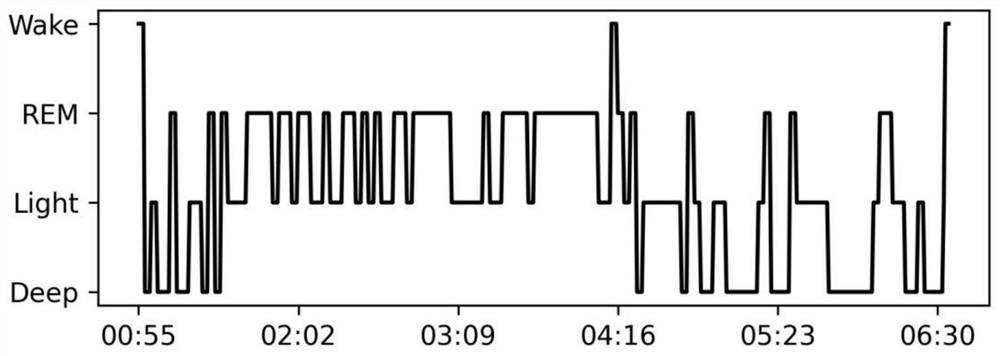Machine learning algorithm for sleep staging by applying prefrontal lobe single-channel electroencephalogram signals
An EEG signal, sleep staging technology, applied in applications, sensors, medical science, etc., can solve the problems of affecting sleep, inconvenience, cumbersome wearing methods, etc., to achieve the effect of convenient collection and wearing, and noise removal.
- Summary
- Abstract
- Description
- Claims
- Application Information
AI Technical Summary
Problems solved by technology
Method used
Image
Examples
Embodiment
[0041] Embodiment: first attach the flexible patch electrode to the Fp1-Fp2 position of the frontal lobe of the monitor, then use the PSG device to collect data signals, and then according to the collected signals according to the corresponding marked labels, divide them into: awake, rapid eye The four categories of active period, light sleep and deep sleep, the collected signal is filtered and removed artifacts, 30s segmentation processing and feature extraction after a series of processing, the extracted features and corresponding labels are sent to the XGBoost model for training ; In the XGBoost model, the objective function is set as the softmax function, and the sleep staging diagram is drawn according to the prediction results given by the model, such as image 3 shown;
[0042] The monitoring time period is 00:50-06:30. In the figure, Wake is the awake stage, REM is the rapid eye movement stage, Light is the light sleep stage, and Deep is the deep sleep stage.
PUM
 Login to View More
Login to View More Abstract
Description
Claims
Application Information
 Login to View More
Login to View More - R&D
- Intellectual Property
- Life Sciences
- Materials
- Tech Scout
- Unparalleled Data Quality
- Higher Quality Content
- 60% Fewer Hallucinations
Browse by: Latest US Patents, China's latest patents, Technical Efficacy Thesaurus, Application Domain, Technology Topic, Popular Technical Reports.
© 2025 PatSnap. All rights reserved.Legal|Privacy policy|Modern Slavery Act Transparency Statement|Sitemap|About US| Contact US: help@patsnap.com



